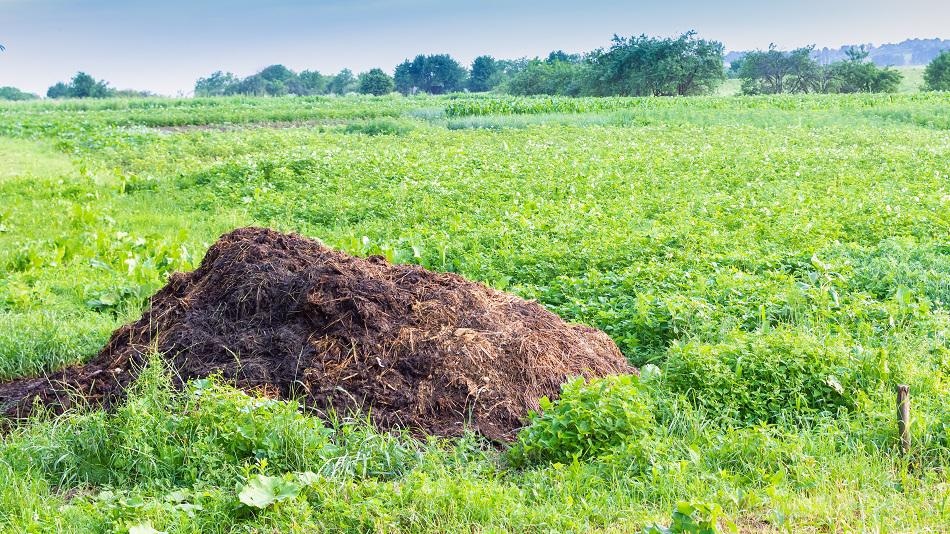
Image Credit: pundapanda/Shutterstock.com
An increasing number of consumers are beginning to call for the use of organic fertilizers as more and more become conscious of how the food they eat is produced and grown. Farmers are also becoming increasingly interested in organic fertilizers, as they are a more economical way of supporting crop growth. An assessment of the composition of a fertilizer first needs to be made to make sure that it does not contain any heavy metals that could make it toxic. An in-depth discussion is given here on the use of organic fertilizers and how their content can be analyzed in the lab.
There is an ever-rising interest in how people can alter their current practices to make them more sustainable. Switching to organic fertilizers is one way in which farmers can do this. Natural materials are used to make organic fertilizers unlike synthetic fertilizers, which are usually made up of a solution of concentrated nutrients produced through chemical means.
Organic fertilizers are derived from naturally occuring plant and animal wastes, ranging from fresh or dried plant material (for example, husks from the unused part of crops) to animal waste and by-products (for example, bird and bat guano, blood meal, bone meal, and feather meal). Since these waste materials have limited economic value otherwise, they are given new purpose when used as fertilizer.
Fertilizers are used in the absence of essential nutrients required for plant growth. This means that crop growth is sped up and farmers are provided with larger yields. In terms of global food production, the practice of crop fertilization is of huge benefit.
The three key nutrients required for plant growth are nitrogen, phosphates, and potassium: or NPK. Human-made fertilizers usually come as an easy-to-administer spray consisting of a mixture of these three chemicals. In this form, it can be efficiently applied to whole fields in an optimized ratio of the three components depending on the crops grown.
It is much harder to optimize this ratio with organic fertilizers, as their nutrient content varies according to the source materials. In comparison to chemical fertilizers, nitrogen and phosphorus levels are often substantially lower in organic fertilizers. However, the slow-release properties of organic matter mean that organic fertilizers provide a steady slow-release of nutrients over time, while, with synthetic fertilizers, crops may need to be treated several times a day.
Heavy metal content is a key concern with organic fertilizers, which has led to restricted agricultural use of organic compost. Organic fertilizers are often made up of municipal solid waste as well as other selected waste biomasses, such as the concentrated remains from plants or animals. These elements can become concentrated in the resulting fertilizer if such organisms have been exposed to heavy metal contamination. The same applies to fertilizer taken from waste sites, where other material may have leaked into the soil and tainted the organic matter.
Suppliers and users of organic fertilizers alike need to be certain that products contain acceptable levels of these controlled elements. Inductively coupled plasma mass spectrometry or ICP-MS is one of the standout methods of testing for such elements. It uses a high-temperature inductively coupled plasma source combined with a mass spectrometer for superior detection of heavy elements. The atoms of the elements in the sample are first converted to ions, which are then separated and detected by the mass spectrometer.
ICP-MS has many other benefits, such as its high throughput and ability to determine isotopic information. However, a sample must be prepared before it can be used. A sample of powder is dried and crushed, then converted into a form that can be analyzed. A compacted disc is the best form for this.
Many labs use Specac's range of hydraulic presses for this compaction. Available in 15 and 25-ton load configurations and configurable as 0-1, 0-2 and 0-5 tons, their manual presses can be used to ensure precise control over the amount of force used. This is particularly important with organic samples, where too much pressure may cause the various organic components to separate.
Autotouch and power hydraulic presses are also offered by Specac, allowing fabrication of pellets with high reproducibility, providing consistent and accurate results. For more information about Specac’s range of hydraulic presses, please visit their website or get in contact with them.
References and Further Reading
- “Introduction to ICP-MS” Available at: https://crustal.usgs.gov/laboratories/icpms/intro.html
- Reading, F. (n.d.). Organic_Soils_Part2.Pdf, 118–129. Available at: https://www.sciencedirect.com/science/article/pii/B0123485304000345
- Lopes, C., Herva, M., Franco-Uría, A., & Roca, E. (2011). Inventory of heavy metal content in organic waste applied as fertilizer in agriculture: Evaluating the risk of transfer into the food chain. Environmental Science and Pollution Research, 18(6), 918–939. https://doi.org/10.1007/s11356-011-0444-1. Available at: https://link.springer.com/content/pdf/10.1007%2Fs11356-011-0444-1.pdf
- Jiménez, M. S., Gómez, M. T., & Castillo, J. R. (2007). Multi-element analysis of compost by laser ablation-inductively coupled plasma mass spectrometry. Talanta, 72(3), 1141–1148. https://doi.org/10.1016/j.talanta.2007.01.006. Available at: https://www.sciencedirect.com/science/article/pii/S0039914007000343?via%3Dihub
- Mortvedt, J. J. (1995). Heavy metal contaminants in inorganic and organic fertilizers. Fertilizer Research, 43(1), 55–61. https://doi.org/10.1007/BF00747683. Available at: https://link.springer.com/content/pdf/10.1007%2FBF00747683.pdf
- “Sample Preparation - Hydraulic Press” Available at: https://www.specac.com/en/products/sample-preparation/hydraulic-press

This information has been sourced, reviewed and adapted from materials provided by Specac Ltd.
For more information on this source, please visit Specac Ltd.